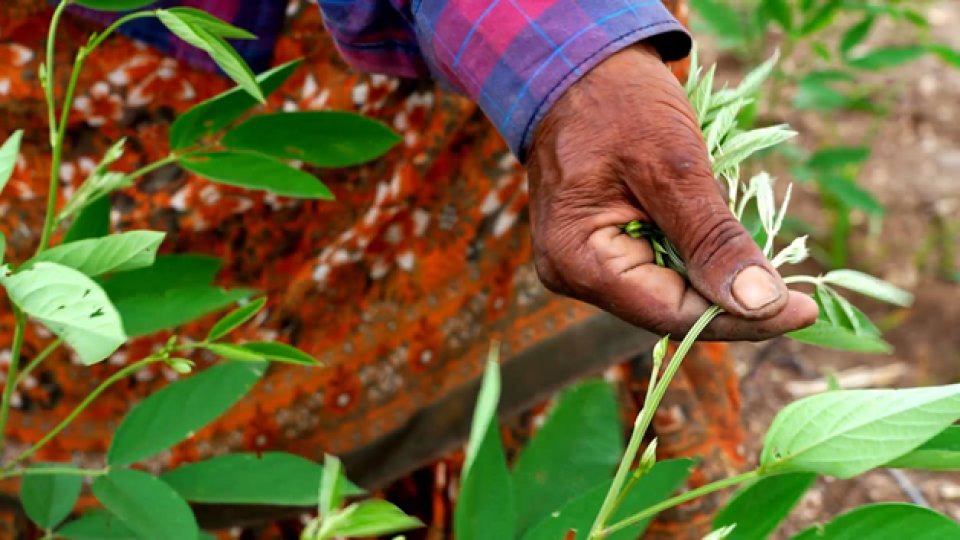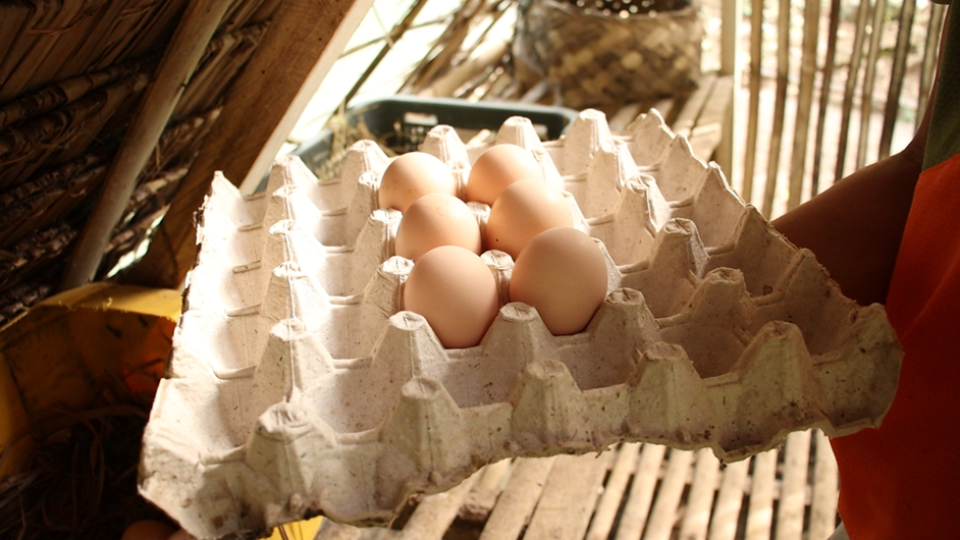



Learning by doing is one of the most powerful educational approaches, both for adults and children. Kids observe what their parents and others in the community do, and they copy it.
As we walk to the Tres de Mayo school in Huayllacayán, in central Peru, which combines a kindergarten, primary and secondary school, we can see that activities on the playground have already started. Today is the final day of our filming trip in this community, and the school has planned the installation of a school garden: an activity they used to have prior to Covid and which they are now more than happy to resume.
When we meet the dynamic and open-minded school director, Luz Valverde, she tells us: “Here in the district Huayllacayán, more than 600 varieties of native potatoes are grown. And we have so many varieties of local crops (oca, olluca and mashwa) as well as plenty of medicinal plants. We also have broad beans and barley. So, the students should value all what we have here in our community. And they should also know how much nutritional value these products have, so they can keep conserving them. They should conserve our environment, conserve the local biodiversity that exists here.”
Some of the teachers and pupils of the final year primary school have started loosening the hard soil and breaking the clods with picks, and we decide to give them a helping hand. It is hard work and at an altitude of 3,000 meters we often have to pause grasping for our breath. Some 15 minutes later, various mothers and fathers joined us. You can immediately see how experienced they are doing this type of work. And so do the kids. The boy next to me carefully observes how one of the dads is handling the tool and then soon resumes with regained insights and energy.
Some other farmers have arrived with their Andean foot plough or chaquitaclla in the local language Quechua. This pre-Inca tool is still widely used and considered the best tool for preparing land on steep rocky slopes without causing soil erosion. When I see the tool in use on the flat playground of the school, I am amazed how fast it loosens up big clods of soil.
Within an hour we have prepared the garden plot, stretching 25 meters long and 3 meters wide. As we work the last few meters, one of the fathers stops me and tries to make it clear to me, in Spanish that I have to work the land differently here. I hadn’t noticed, but the tail end of the plot slightly slants downward, so we need to make the planting ridges perpendicular to the other ones, so that the irrigation water can easily move and cover the entire plot. This shows how farmers think ahead in everything they do. While I was just preparing the soil, he was already thinking about irrigation.
After being shown how to plant, the kids soon start planting onions, lettuce, broccoli and cabbage seedlings. The parents assist, observe their kids, and at times give them some advice. Later on, they will add some of the native crops.
By 10 o’clock the work is over. At one side of the school garden, the kids install a netted fence to protect the food garden when they play on the playground. As they fix the long green net with pieces of metal wire to wooden poles, previously inserted in the soil by the teachers; it is great to see how handy these kids are: it is clearly not the first time that they have handled all these tools.
School gardens have been around for many years and in many countries, as a way for students to learn about farming, and to provide healthy ingredients for school meals, free of agrochemicals. What is unique here, is that many parent farmers helped to install the garden, so the kids learn by observing their parents in a school context. Perhaps the most important is that the kids feel that the culture of their parents is being appreciated by a formal institution.
All too often children are taught to look down on their own indigenous culture and on local customs and knowledge.
“I think that school directors across the world who work as leaders should include everyone in our educational community, so that everything we have around us is valued,” concludes Luz Valverde in her interview.
Watch related Access Agriculture video
Teaching agroecology in schools


